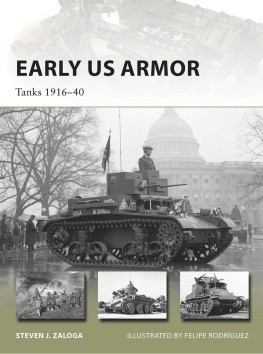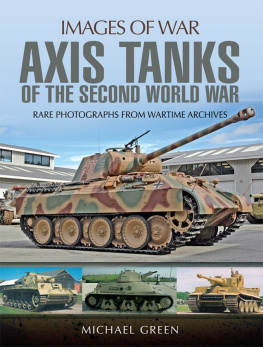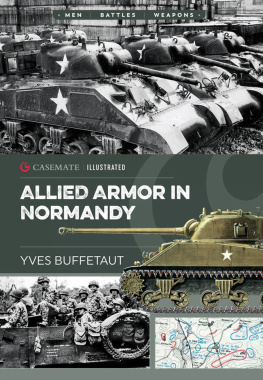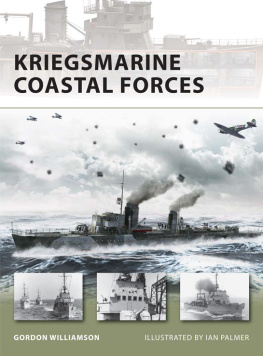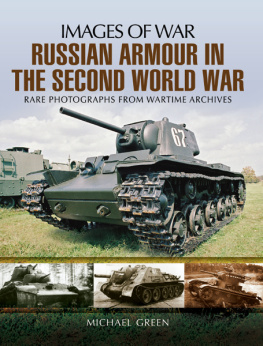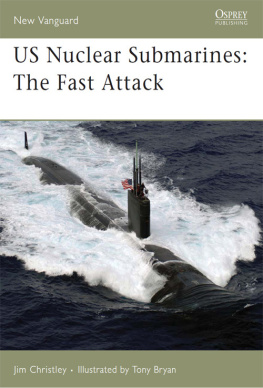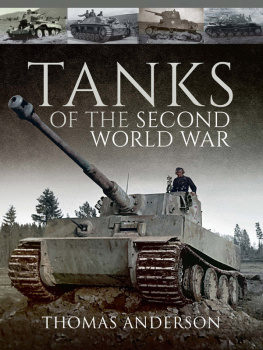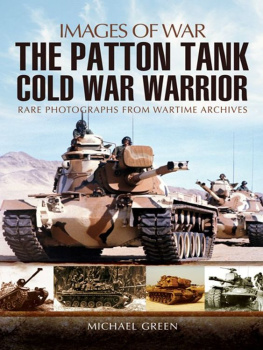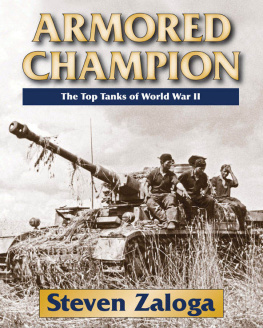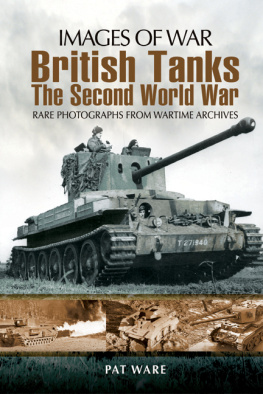IMAGES OF WAR
ALLIED TANKS OF THE SECOND WORLD WAR
RARE PHOTOGRAPHS FROM WARTIME ARCHIVES
Michael Green
First published in Great Britain in 2017 by
PEN & SWORD MILITARY
An imprint of
Pen & Sword Books Ltd
47 Church Street
Barnsley
South Yorkshire
S70 2AS
Copyright Michael Green, 2017
ISBN 978-1-47386-676-8
eISBN 978-1-47386-678-2
Mobi ISBN 978-1-47386-677-5
The right of Michael Green to be identified as author of this work has been asserted by him in accordance with the Copyright, Designs and Patents Act 1988.
A CIP catalogue record for this book is available from the British Library.
All rights reserved. No part of this book may be reproduced or transmitted in any form or by any means, electronic or mechanical including photocopying, recording or by any information storage and retrieval system, without permission from the Publisher in writing.
Pen & Sword Books Ltd incorporates the imprints of Pen & Sword Archaeology, Atlas, Aviation, Battleground, Discovery, Family History, History, Maritime, Military, Naval, Politics, Railways, Select, Social History, Transport, True Crime, and Claymore Press, Frontline Books, Leo Cooper, Praetorian Press, Remember When, Seaforth Publishing and Wharncliffe.
For a complete list of Pen & Sword titles please contact
PEN & SWORD BOOKS LIMITED
47 Church Street, Barnsley, South Yorkshire S70 2AS, England
E-mail:
Website: www.pen-and-sword.co.uk
Contents
Dedication
The author would like to dedicate this book to the memory of Major General Adna R. Chaffee Jr. who is considered the father of the US Army Armoured Forces.
Foreword
D uring the interwar years, great debates began about the use of tanks in land warfare. This debate led by the acrimonious tauntings between J.F.C. Fuller and Basil Liddell Hart in England was only the beginning of the salvos soon to be fired during the Second World War. At issue was the role of the tank: was it an infantry support weapon, a weapon to achieve breakthroughs in the enemy lines or a vehicle for reconnaissance and pursuit? This debate would influence tank design and doctrine throughout the Second World War. So this is the perfect place for this latest work by Michael Green to fit into the historiography of that conflict.
Many volumes, for instance, track the enormity of the job of building an army in the United States. The manufacturing marvels turned out by industry a feat of men, muscle and matriel could in some aspects be the decisive factor in the war. What the author has done is take the tactics, doctrine and industrial capacity and boiled them down into the products made by the allied countries facing the German bewegungskrieg or war of operational manoeuvre.
Modern-day programme managers talk about the trade-offs they have to make on vehicle development around the iron triangle of power/performance/protection. The author takes the reader down this same road in the Second World War and shows why tanks were accepted or rejected for service by the military. Lack of armoured protection, too heavy, too light, not enough power, too slow or lack of firepower and numerous engine designs and fuels were just some of the many issues faced by tank developers. The importance of this work cannot be overstated. The author clearly shows the vital link between what is possible and what is probable in building light, medium and heavy tanks. Take the US army M3 Medium Tank as an example of a good idea gone bad.
Prior to 1940, all American tanks were hand-crafted, one at a time, at Rock Island Arsenal in Illinois. There was no facility to build tanks, nor was there a workforce or the industrial know-how and capacity to mass-produce tanks. The building of the Chrysler Tank Arsenal (Detroit Arsenal Tank Plant) was the first facility built in the United States solely devoted to tank design and mass-production. With the help of the US army, the first tank off the assembly line was the M3 Medium Tank.
The M3 was obsolete before it even left the drawing board and its design left something to be desired. Viewed as an infantry support weapon, the Infantry Branch demanded a 37mm gun on the tank. The 75mm gun was for blowing holes through defensive positions for the infantry to storm through. The result was an ineffective design, a limited use and capability of the main gun (housed in a pulpit-like enclosure on the right side with limited ability to shoot left/right or up/down), and a limited-use 37mm main gun in the turret. Before the production run was complete on the M3, the M4 Sherman production began on adjacent assembly lines.
Randy R. Talbot
Command Historian (retired)
US Army TACOM Life Cycle Management Command
Acknowledgments
A s with any published work, authors must depend on a great many people for assistance. These included, over many years, my fellow author and long-time mentor the late Richard Hunnicutt. Other friends who kindly supplied information and pictures for this work are credited in the captions.
Both the paid and volunteer staff of the now-closed Patton Museum of Armor and Cavalry provided the author with a great deal of assistance over many years. For the sake of brevity all images from the former Patton Museum of Cavalry and Armor will be credited to the Patton Museum.
I am also indebted to David Fletcher, fellow author and the long-time former librarian at the Tank Museum located in Bovington, England. He has greatly assisted the author in locating photographs for many of his books. All images from the Tank Museum in Bovington will be credited to just the Tank Museum for brevity.
A US army entity that assisted the author in acquiring historical photographs of American tanks for this work was the Command Historians Office of the TACOM Life Cycle Management Command (LCMC). All pictures from this organization are credited to TACOM for the sake of brevity.
Notes to the Reader
Due to the size and format of this series of books the author will concentrate on the gun tank versions of the vehicles described in the text. What is not covered will be those vehicles converted to support-based versions such as bridge-layers, self-propelled artillery, command and control vehicles, recovery vehicles, antiaircraft vehicles, etc.
Prior to the Second World War and during the conflict armies generally classified their tanks as light, medium or heavy, based on the weight of the tank. Some armies also classified them by their missions. Each countrys system was unique, sometimes arbitrary and in some cases was changed during the course of the war. What one army might classify as a light tank would be considered a medium tank by another army or vice versa.
Chapter One
Light Tanks
I n the decades following the First World War those countries with the industrial capability to design and build tanks tended to concentrate on light tanks. This came about for different reasons: they were what the existing industrial base was capable of designing and building, and they were more affordable than medium and heavy tanks when funding constraints were in place. Armies were also limited by their nations transportation infrastructure which dictated a tanks maximum weight as well as exterior dimensions.
French Light Tanks
It was the French army that pioneered the development and fielding of the earliest light tank during the First World War. That vehicle was the two-man Renault FT that weighed approximately 15,000lb. It was armed with either a machine gun or a 37mm main gun. As it was not intended to engage enemy tanks, it was considered an infantry support tank. After the First World War the vehicle became unofficially known as the Renault FT17 or the Renault FT-17, a tradition that continues to this day.
Next page

